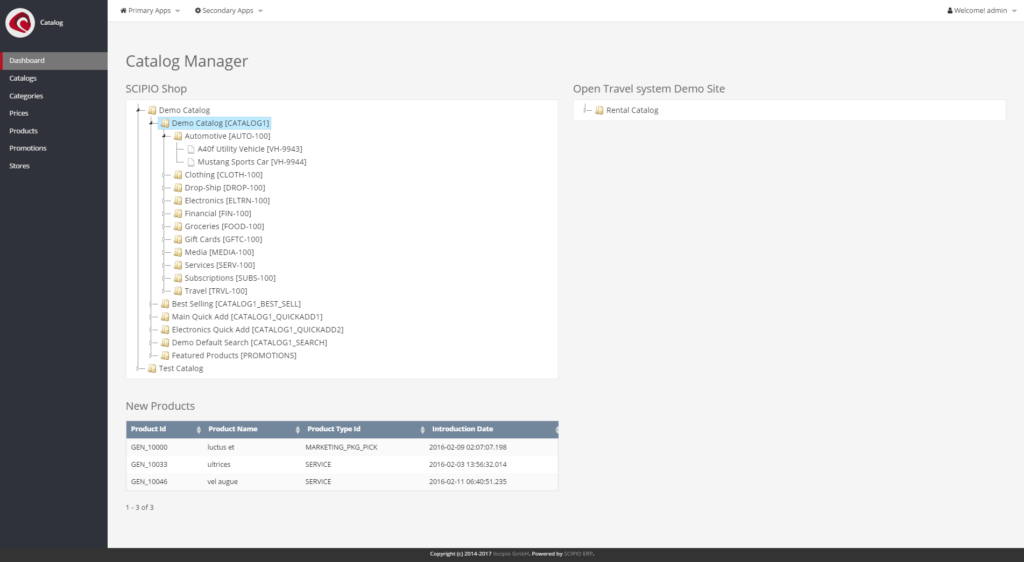
Catalog Manager – Dashboard
Catalog Management (“Catalog” or “PIM”), is a full product information management system that can be used to organize product and catalog information. The component can be separated into three parts:
- Product, Category and Catalog management
Management of product information, catalogs and categories, including their relation between one another, start and expiry dates and respective features. - Prices and Promotions
Management of Generic Price Rules in addition to individual product prices, as well as promotions, which can affect the overall order or product prices. - Store Management
Management of web stores, the digital equivalent of a website with store functionality. Maps directly into the shop component and allows for a multi-store setup. Each store can be assigned to an individual company, limited to geo ids, have its own theme, email settings, and various behavior configurations (how inventories are handled, which currency to use by default, how up-sells are used, if cart information are stored in cookie etc.).
The component is interconnected with a warehouse management component (facility), which manages the stock information, shipping & shipping gateways, picking / packing and more.
Overall, the application is categorized as follows:
- Catalogs
- Catalog
- Catalog Categories
- Catalog Parties
- Categories
- Category
- Category Associations
- Category Content
- Category Products
- Prices (Global Price Rules)
- Products
- Search
- Product Information
- Associations
- Attributes
- Categories
- Content
- Costs
- Features
- Feature
- Feature Category
- Feature Group
- Feature Interaction
- Feature Type
- Geos
- IDs
- Payment Types
- Prices
- Product
- Product Overview
- Subscription Resources
- Suppliers
- Vendors
- Warehouses
- Promotions
- Stores
- Overview
- Webstore
- Catalogs
- Emails
- Fin Accts
- Keyword
- Payment Methods
- Promos
- Role(s)
- Segments
- Shipping
- Shipping Estimates
- Store
- Surveys
- Vendor Payments
- Vendor Shipments
- Warehouse
- Web Sites